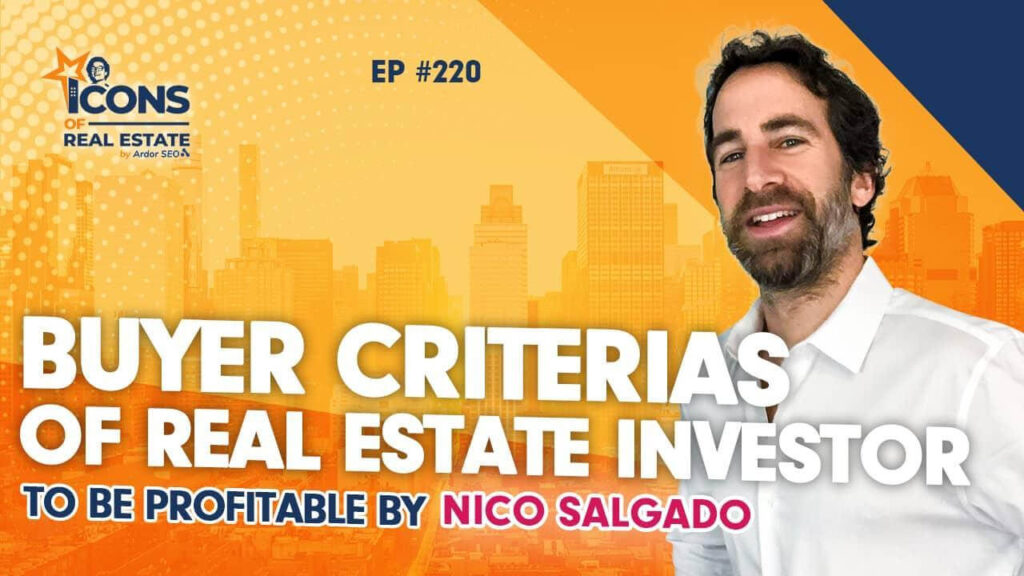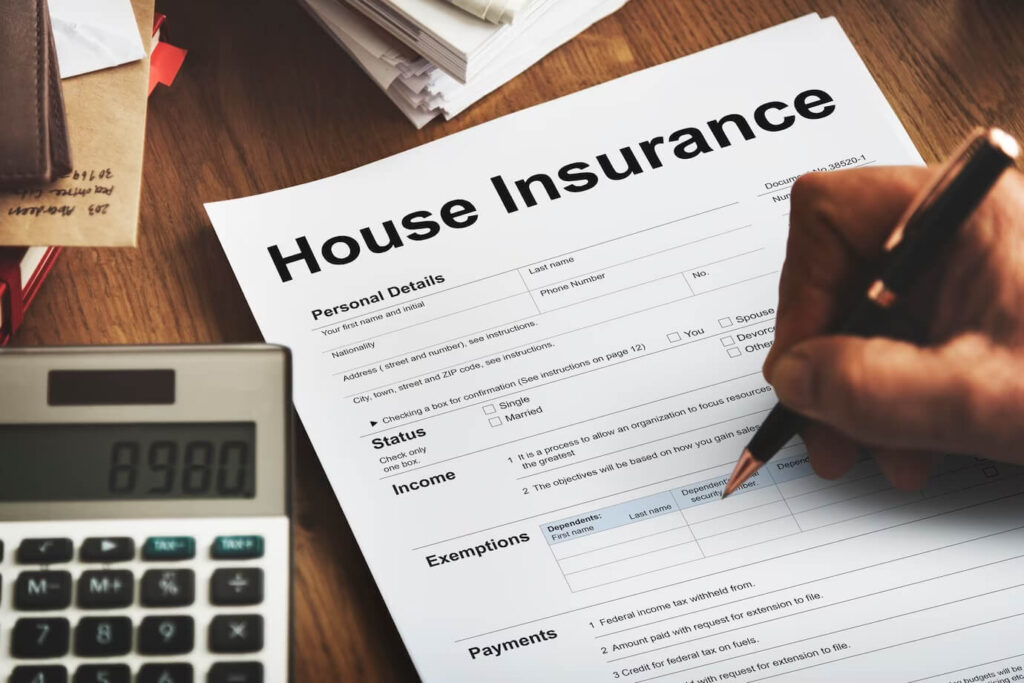Understand the impact of current insurance rate increases we’ve seen in Florida on real estate investments. Discover effective strategies to adapt for success.
 Are you aware of the current insurance rate increases we’ve seen in Florida? It’s a hot topic among homeowners and real estate investors, and for a good reason.
Are you aware of the current insurance rate increases we’ve seen in Florida? It’s a hot topic among homeowners and real estate investors, and for a good reason.
The Sunshine State’s real estate market is booming. But with natural disasters becoming more frequent, it’s no wonder insurance rates are on the rise. So, what can we learn from real estate experts like Nico Salgado to navigate this challenging environment?
In a recent podcast episode, Nico shared valuable insights into real estate investing. He touches on topics like market understanding and property vetting. Although he didn’t discuss insurance rates, his expertise can shed light on some factors that might indirectly affect them.
Today, we’ll discuss the reasons behind the insurance rate increases Florida. We’ll also examine how real estate investors can adapt to this new reality. Along the way, we’ll reference Nico’s insights to provide a well-rounded perspective.
About Nico Salgado
Before we go into the matter, let’s take a moment to get to know Nico Salgado. What led him to the world of real estate, and how did his journey unfold?
Nico Salgado began his real estate investing in 2012 with a single-family development project in Nicaragua. Since then, he has scaled his portfolio to include one full cycle deal of 194 units as a General Partner, and he currently owns and manages 44 more units in Florida.
As the founder and visionary of Small Axe Communities, Nico developed and executed the company’s long-term objectives. He’s in charge of growth strategies and initiatives and overseeing day-to-day operations.
Beyond his investing achievements, Nico is an active member of the real estate community. He hosts a monthly meetup group titled the Multifamily Investors Network NY and the Small Axe Podcast. Through these platforms, he shares his belief that “it only takes a small axe to build a lasting empire.”
Nico’s background is quite diverse. He went to school for business management, worked in sales, and later pursued a career in teaching.
His experiences, personal and professional, have shaped his unique approach to real estate investing. Nico’s passion for travel has also influenced his keen eye for real estate opportunities.
Drawing from his wealth of experience and knowledge, Nico’s insights will serve as a valuable resource. With this foundation, let’s explore real estate market trends in Southwest Florida and the factors contributing to rising insurance rates.
The Florida Real Estate Market
Florida’s real estate market has been making headlines for its rapid growth and increasing popularity among homebuyers and investors. Recent developments from the Citizens Property Insurance Corporation’s board of governors voted to file for a 14.2% average increase for personal lines.
Similarly, a 12.3% spike in commercial policies further emphasizes the challenges faced by those in the market. If approved by Florida’s Insurance Regulation Office, these changes would take effect in November.
But what makes this market so special? How can we apply Nico Salgado’s insights to understand it better?
Growth Factors in Florida’s Real Estate Market
The Sunshine State is experiencing significant population growth. More people flock to its warm climate, sandy beaches, and thriving economy. Moreover, Florida’s economic diversity, with industries ranging from tourism to aerospace and technology, attracts various professionals and businesses.
Nico Salgado emphasizes the importance of understanding market dynamics and identifying the key factors contributing to a market’s growth. The increasing population, economic diversity, and business-friendly environment in Florida make it an attractive destination for real estate investors.
Challenges for Real Estate Investors in Florida
Despite its many opportunities, Florida’s real estate market has challenges. As Nico mentions in the podcast, a crucial part of vetting is knowing what to look for in a property.
This is where real estate lead generation ideas can play a significant role. We need to understand the risks associated with a particular market.
In Florida, some risks investors need to consider are the potential for natural disasters (e.g., hurricanes and flooding.) They also need to factor in the impact of rising Florida property insurance rates on property values and investment returns.
Additionally, the competitive market may lead to inflated prices. This makes it even more critical for investors to evaluate potential deals carefully.
Learning from Nico’s Property Vetting Process
According to Nico, real estate investors in Florida can better navigate the market by focusing on specific property characteristics and local market conditions. Consider factors like construction type, age, location, and potential risks (e.g., flood zones). By applying real estate listing tips, sellers can effectively showcase their properties in the competitive Florida market. This way, investors can make more informed decisions and mitigate potential losses.

Reasons for Insurance Rate Increases in Florida
As Florida’s real estate market grows, so do the insurance rates. But what factors are driving these increases? How do they relate to the insights shared by Nico Salgado in the podcast?
Increasing Natural Disasters and Climate Risks
Florida is not new to natural disasters, particularly hurricanes and floods. We know that climate change causes more frequent and severe weather events.
As a result, insurance companies face higher claims, increasing property owners’ premiums. This is important for real estate investors, as higher insurance costs can impact their investment returns.
Nico said understanding the risks associated with a particular market is crucial for property vetting. In Florida, investors must pay close attention to properties in flood-prone areas and consider the potential impact of natural disasters on their investments.
Impact of Construction Costs and Building Materials on Insurance Premiums
The cost of construction and building materials can also influence Florida homeowner insurance rates. As prices for materials like lumber and steel rise, so does the cost to rebuild or repair a property. Consequently, insurance companies may increase premiums to account for these higher costs.
Nico Salgado’s stress on property characteristics, like construction type and age, becomes particularly relevant in this context. If investors focus on properties with sturdy construction and lower maintenance requirements. In that case, they can reduce insurance costs and protect their investments.
Property Characteristics and Their Influence on Insurance Rates
As highlighted by Nico, specific property characteristics can affect the overall risk profile of a property. In Florida, investors should watch out for factors like the construction type (e.g., concrete block), age, location (e.g., flood zones), and roof type (e.g., pitched roofs).
Properties with these characteristics may be less susceptible to damage from natural disasters. These, ultimately, lead to lower insurance premiums.
Strategies for Real Estate Investors to Navigate Rising Insurance Rates in Florida
Now that we’ve discussed the factors driving current insurance rate increases we’ve seen in Florida, how can real estate investors adapt to these changes? Let’s see some strategies to help investors with the rising insurance costs.
Due Diligence and Thorough Property Vetting
One of the key takeaways from the podcast is the importance of thorough due diligence and property vetting. We must carefully evaluate potential investments. With this, investors can avoid properties with higher insurance risks.
These properties include those in flood zones or constructed with less durable materials. This can eventually lead to lower insurance premiums and better overall returns.
So, what’s the secret to successful property vetting? It’s about being methodical. Know your market, and understand the characteristics that can influence insurance rates.
Shopping Around for the Best Insurance Rates
As insurance rates continue rising, real estate investors should shop for the best deals. Compare quotes from multiple insurance providers. This lets investors find the most competitive rates and potentially save on their premiums.
Don’t be afraid to negotiate with insurers, either. Highlighting the property’s desirable characteristics. Look for sturdy construction or recent upgrades. All these can help investors secure lower rates.
Implementing Mitigation Measures
Investors can also proactively reduce their properties’ risk exposure and potentially lower insurance premiums. For instance, you invest in flood-resistant materials and install hurricane-resistant windows.
Or try upgrading the roof to withstand high winds. These can make a property more resilient to natural disasters.
This way, investors can protect their investments. They can also demonstrate to insurance companies that they’re committed to reducing risk, leading to more favorable insurance rates.

Preparing for Continued Insurance Rate Increases and Market Shifts
Real estate investors in Florida face the reality of rising insurance rates. So, it’s essential to consider how these Florida insurance rate trends may evolve. But how can investors stay ahead of the curve and adapt their strategies accordingly?
Keep an Eye on Legislative Changes
Insurance policies and regulations can change over time and are influenced by various factors. Factors like the frequency of natural disasters, economic conditions, and political decisions.
So stay informed about these changes. Awareness helps real estate investors adapt their strategies and make better investment decisions.
For instance, Florida’s insurance regulations may evolve to address the growing risks of climate change and flooding. By monitoring these changes, investors can better understand their implications and adjust their approach accordingly.
Diversify Your Investments
As Nico Salgado’s multifaceted real estate journey demonstrates, investors must consider diversifying their portfolios. Invest in properties across different markets.
If investors spread their risk. Then the impact of localized challenges, like rising insurance rates Florida, will be reduced. Moreover, diversification or even branching into other asset classes further helps investors mitigate risks and maintain a balanced portfolio.
Embrace Technology and Innovation
We see how technology continues to shape the real estate industry. Thus, investors should be open to embracing new tools and innovations. This helps investors better manage their properties and navigate the changing insurance landscape.
For example, try to utilize data-driven tools for property valuation, insurance rate comparison, or risk assessment. This provides investors with valuable insights to inform their decisions.
Additionally, adopting smart home technologies allow investors to enhance their properties’ resilience to natural disasters. Embracing energy-efficient solutions may also potentially lower insurance costs.
Conclusion
As we’ve learned, the current insurance rate increases we’ve seen in Florida present challenges and opportunities for investors. By drawing on the insights shared by Nico Salgado in the Icons of Real Estate podcast, investors can better understand the factors driving these increases. This helps in developing strategies to adapt to the changing landscape.
From thorough property vetting to embracing technology, investors have various tools to mitigate the evolving insurance market.
Ultimately, the key to success in Florida’s real estate market lies in staying informed, adaptable, and open to new ideas. By learning from industry leaders like Nico Salgado and the Icons of Real Estate podcast, investors can continue to thrive. Yes, even as insurance rates and market conditions shift.

